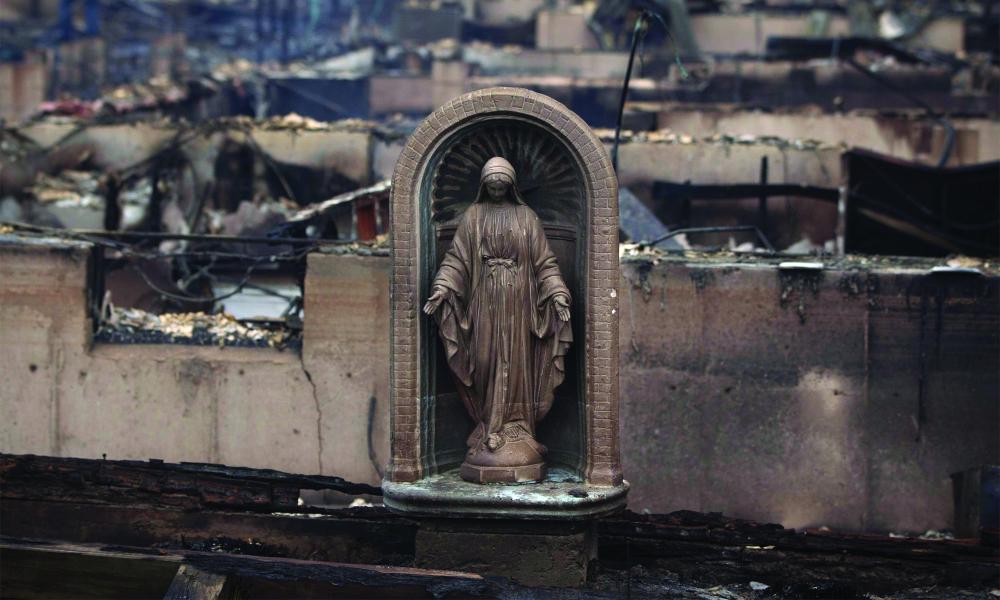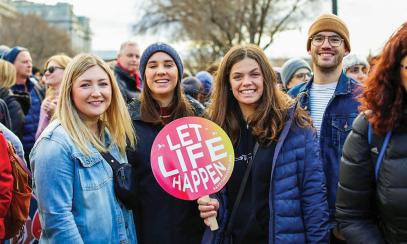
Superstorm Sandy wreaks havoc – how you can help
Sandy, a superstorm that began as a hurricane, slammed into the East Coast of the United States Oct. 29. At least 74 people are reported dead, and millions were without power. New York City’s transportation system, vital to residents’ lives, sustained significant damage.
Bishop Boyea released a statement via Twitter: “Please pray for all those affected by the hurricane, especially the homeless and the poor.”
At his General Audience on Oct. 31, the Holy Father prayed for those affected: “Conscious of the devastation caused by the hurricane which recently struck the East Coast of the United States of America, I offer my prayers for the victims and express my solidarity with all those engaged in the work of rebuilding.”
The president has declared a major emergency for this area, and many organizations are providing assistance
Donations toward the relief efforts can be made via checks made payable to “Diocese of Lansing” and sent to:
Hurricane Relief
Diocese of Lansing
228 N. Walnut St.
Lansing, MI 48933
Hurricane Sandy’s impact in New York From Catholic News Service
The damage from the wind, rain and flooding brought by Hurricane Sandy “is almost overwhelming,” said Msgr. Kevin Sullivan, executive director of Catholic Charities of the Archdiocese of New York.
“We’re reaching out to parishes and getting them to directly assist those in critical need – they know their own people and their neighborhoods,” he told Catholic News Service Oct. 31.
Several Catholic agencies and religious communities have stepped forward to address the greatest needs of victims of the super storm.
“Reaching out to parishes and other communities and neighborhoods is imperative at this point,” Msgr. Sullivan explained. “The response on the parish level has been tremendous. We’re also working very, very closely with several municipal, state and private agencies, including Red Cross, to figure out the best way to respond to this disaster.”
When New York state and New York City were preparing for Sandy’s unprecedented onslaught, emergency responders had met with Msgr. Sullivan and Catholic Charities to plan how to best utilize its resources and personnel after the storm.
“We’ve been in conversation with dozens of governmental agencies and made sure we put our staff in place. We have a lot of social work case managers who are trained to deal with emergencies like this,” the priest said.
“They know how to get greater access to available services to those in need,” he said. “Many people suffering through disasters fall through the gaps. Our staff is in place to make sure that doesn’t happen. We found this is the best way to work with victims in this situation.”
Sandy, which made landfall in New Jersey Oct. 29, caused flooding, power outages, downed trees and other calamities over a large swath of the East Coast and into the Midwest. As of Nov. 1, the U.S. death toll from the storm stood at 74 people and more than 5.6 million homes and businesses were still without power.
Cleanup and repair in New York City were going forward after the storm, but only so much could be done with more than 500,000 New Yorkers living without electricity and without the use of the nation’s largest subway system.
“The greatest need is in southern Manhattan, the Long Island shore, Far Rockaway, the Bronx, large parts of Staten Island, and large parts of Brooklyn,” said Msgr. Sullivan. “The power outages and lack of transportation are compounding the already bad situation. These people need everything – food, shelter, clothing, communications, medical care, legal assistance – every conceivable need. We’re doing our best.”
A chief concern for Catholic Charities is making sure that services to the people it already serves on a daily basis continues unabated especially its year-round services to the homeless, children, the poor, the elderly, infirmed and disabled.
“Those who needed it were evacuated to shelters to better care for them. Sometimes there were public facilities and sometimes our own in areas unaffected by Sandy,” the priest said. “Those who are most vulnerable need the most care especially those with physical and emotional challenges. Where necessary, they are evacuated to safer situations.”
“We are coordinating by parishes, but the Holy Spirit is doing most of the coordinating,” Msgr. Sullivan said with a chuckle.
In addition to the assistance Catholic Charities is providing, he urged lay Catholics to “reach out to their neighbors on a one-to-one basis. We are grateful for all our parishioners who are reaching out to those in need, driving neighbors to shelters and just checking up on people.”
“If they’re capable, they should volunteer at shelters. They can make contributions and, above all, they can pray. There’s a lot of need. There are a lot of people who are hurting especially because of the power outages.”
Msgr. Sullivan said Catholics “are concerned and those who are capable of lending a hand are doing so.” He told of a parishioner at St. Augustine in Ossining in Westchester County, north of New York City, “who is organizing other parishioners in going door-to-door to check up on their neighbors and the elderly in the town making sure they have everything they need.”



